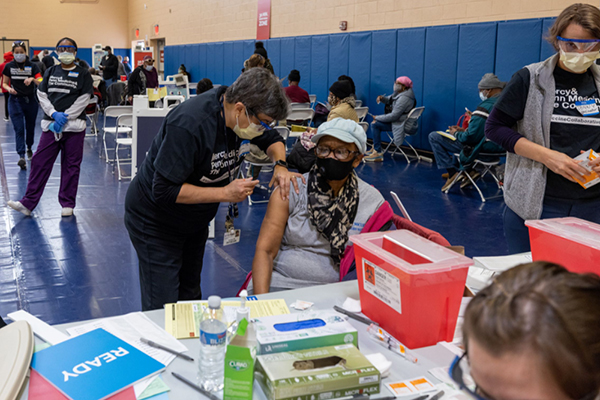Nationwide, the rollout for the COVID-19 vaccine has been inequitable, with white individuals being vaccinated at higher rates compared to Black individuals. In Philadelphia, only 21% of the vaccine had gone to Black residents by March 2021, even though this group makes up 42% of the city’s population. As such, leaders from Penn Medicine, Mercy Catholic Medical Center, and the community partnered on designing and running a series of community-based clinics that vaccinated almost 3,000 people, 85% of whom were Black. A retrospective of their efforts on the three initial clinics was published in NEJM Catalyst.
“Addressing the vast disparity in both COVID outcomes and vaccine distribution is a critical priority both locally and nationally,” says the paper’s lead author, Kathleen Lee, director of Clinical Implementation in the Penn Medicine Center for Health Care Innovation and an assistant professor of emergency medicine. “We wanted to share our insights in the hope that this will both bring further attention to the issue and help inform the efforts of others.”
The process described in the paper was designed to intentionally center equity and address the structural barriers—such as clinic location, web-based sign-ups that require a computer and stable internet connections, and the time to navigate complicated forms—that have prevented Black and other underrepresented minority communities from being vaccinated at equitable rates.
Ultimately, the paper emphasizes that any community clinic must be highly tied to the unique needs of a community, and both informed and designed with the input of its key leaders. This includes an emphasis on building trust and utilizing existing neighborhood-level networks.
While the paper describes the efforts in detail, Lee, senior author Eugenia South, an assistant professor of emergency medicine, and other members of the team describe some of the main takeaways for cities, health systems, nonprofits, and others looking to equitably distribute the vaccine, including locate rotating clinics in the heart of Black neighborhoods, adapt clinics to be scalable in any space, and embrace a low/no-tech approach.
This story is by Frank Otto. Read more at Penn Medicine News.








